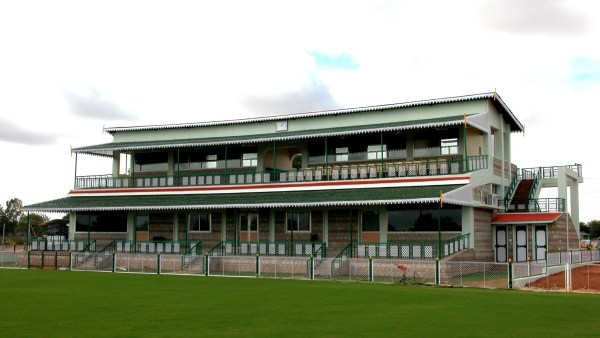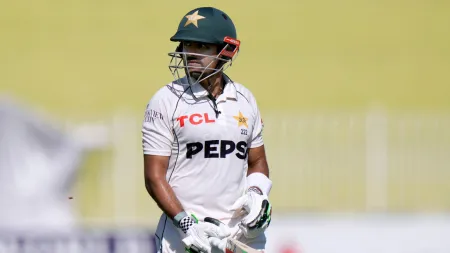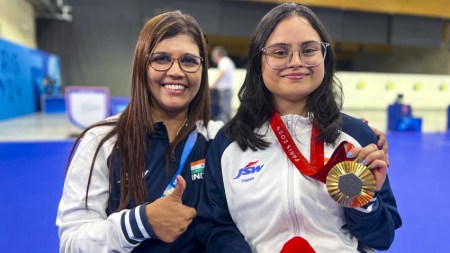Duleep Trophy: Anantapur’s ‘Perth’ aims to fix India’s pace woes before Australia tour
There is a long-standing disparity on the honours boards at the Anantapur Cricket Ground.
Concealed from premier First-Class cricket for nearly a decade, the contrast of an Indian ground where pace outranks spin has grabbed BCCI’s attention this year. Mainstream cricket will return to these badlands, in the drought-stricken southwestern Andhra Pradesh district, with the season-opening Duleep Trophy as India C take on India D, starting September 5.

Fifteen seamers have made the honours boards at Anantapur’s ACA ADCA ground. Only a solitary spinner (KJ Appanna in 2006) has bagged a five-wicket haul to share that space in this period.
The rationale behind the choice of venue (barring one match in Bengaluru) may be derived from this unique pace tryst of Anantapur, as a pivotal Australia tour simmers in the background. The national selectors would be keen to take stock of the front-line batters and the fast-bowling reserves behind Jasprit Bumrah, Mohammad Shami and Mohammed Siraj for the Border-Gavaskar Trophy.
Of bounce and speed
Poverty and underdevelopment paint the general picture of Anantapur’s sandy ethos. But Moncho Ferrer does not overstate the return of high-profile cricket for the sport bleeds through the region throughout the year.
“Oh, there’s a lot of cricket that happens here. It is just that not a lot of high-level cricket happens. The grounds are occupied almost daily. There are inter-district, inter-state matches, and private matches. There are all kinds of activities. Plenty,” says Ferrer, the Director of Programmes at the Rural Development Trust (RDT), the local NGO that set up the Anantapur Cricket Ground.
Ferrer believes the BCCI’s imminent requirement for ‘sporting’ pitches has had them turn to Anantapur this season.
 The pavilion at the Anantapur Cricket Ground. (Special Arrangement)
The pavilion at the Anantapur Cricket Ground. (Special Arrangement)
Coincidentally, the Anantapur Cricket Ground, run by the RDT with the Andhra Cricket Association’s backing, has carried some of the bounciest surfaces in the country. Save for a solitary Ranji Trophy plate group match in 2018, the occasion will mark the first time in 11 years that they will serve in First-Class matches.
Between 2004 and 2013, where it hosted 15 matches, the main ground at the facility bore 345 wickets by pace and only 96 by spin. Interestingly, only once has a team folded below 100 runs [80] and only four innings have achieved a 400-plus total [highest: 447/8].
“We were one of the first in the country to try to integrate sports into the development sector. Sports can be a tool for many things. For inclusion and gender, etc. And then Anantapur being Anantapur, there was no sports infrastructure at all. So then one was to provide access to decent quality sports infrastructure in rural areas that cities are used to having.
“Anantapur Cricket Ground was the motivation 20 years ago for all the other districts in Andhra, to give them the belief that ‘Yes we can do it as well,’” says Ferrer.
Aussie connect
The RDT’s desire for innovation eventually culminated in the modelling of a ground that bore Australian traits, of Perth and Adelaide, regarded among the fastest pitches in the world.
“We wanted to experiment with something different and not have the same kind of wickets most of the country has. Since we were a small centre, we could afford that risk, unlike the cities. We tried to use the Australian and South African pitch construction methods. It is hard to find the right kind of soil and the necessary stuff. But we decided to be bold and courageous (laughs),” quips Ferrer.
Born to Spanish reformer Vicente Ferrer and his English wife Anne, who set up the RDT in 1969 in the district, Moncho understands Anantapur more than most.
Scant resources have naturally directed to alternative ways of ground water preservation. “Anantapur, of course, is historically a drought-prone district. That is why it has such few resources and is known as one of the poorest regions in the country. So it is important to learn to manage your resources well and be smart in doing things,” Ferrer says.
It begins with the choice of grass on the strips and the outfield that can survive for days without water before growing back.
“The Hybrid Bermuda selection 1-grade grass we have for the pitches and the outfield was bred in Australia. It survives temperatures up to 70 degrees,” says Madhu Achari, curator of the ACG and secretary of the Anantapur District Cricket Association (ADCA).
 The honours board at the Anantapur Cricket Ground. (Special Arrangement)
The honours board at the Anantapur Cricket Ground. (Special Arrangement)
“The climate is generally scorching here, touching high 30s to 40 degrees. We have used pure black soil from Amalapuram near Kakinada, about 850 kilometres away. We got them scientifically tested, and the reports showed similarity to the conditions of Perth and Adelaide. Compared to other pitches in India, the difference here is the high clay content in the soil. The clay makes up nearly 65 per cent of the pitch, five per cent of sand, and the rest is silt,” Achari explains.
The high-maintenance texture of these pitches makes it imperative to bear more active strips in the centre. The main venue of the facility holds 13 pitches. The ‘B’ ground, awaiting its First-Class debut, has seven.
“It is difficult to manage because these pitches crack excessively. So you have to rotate them frequently. If a pitch is used for a game, it must be rested for nearly 45-50 days. Only then can we expect similar results for the next match. Given the Indian cricket calendar, it is difficult to operate until we have at least 9-11 strips in the square,” Achari says.
While neutral BCCI curators will overlook the preparations for the Duleep Trophy, Achari is confident the pitches will hold onto their Aussie instincts.
“I am expecting the same (bouncy pitches). I used to prepare the pitches alone throughout the season. Nowadays, the BCCI sends neutral curators to manage them. The rest will depend on their preparation according to the team conditions. Their methods and experience are better than mine,” Achari remarks.
Even as the venue hosts several NCA camps and BCCI age-group tournaments, Ferrer remains grounded on the prospect of more top-end tournaments soon at the facility.
“Now every district in Andhra has a ground (laughs),” he says.
In the meantime, Anantapur will relish the procession of the country’s top stars to their backyard. To their own mighty ‘Perth’.
Disclaimer: The copyright of this article belongs to the original author. Reposting this article is solely for the purpose of information dissemination and does not constitute any investment advice. If there is any infringement, please contact us immediately. We will make corrections or deletions as necessary. Thank you.





